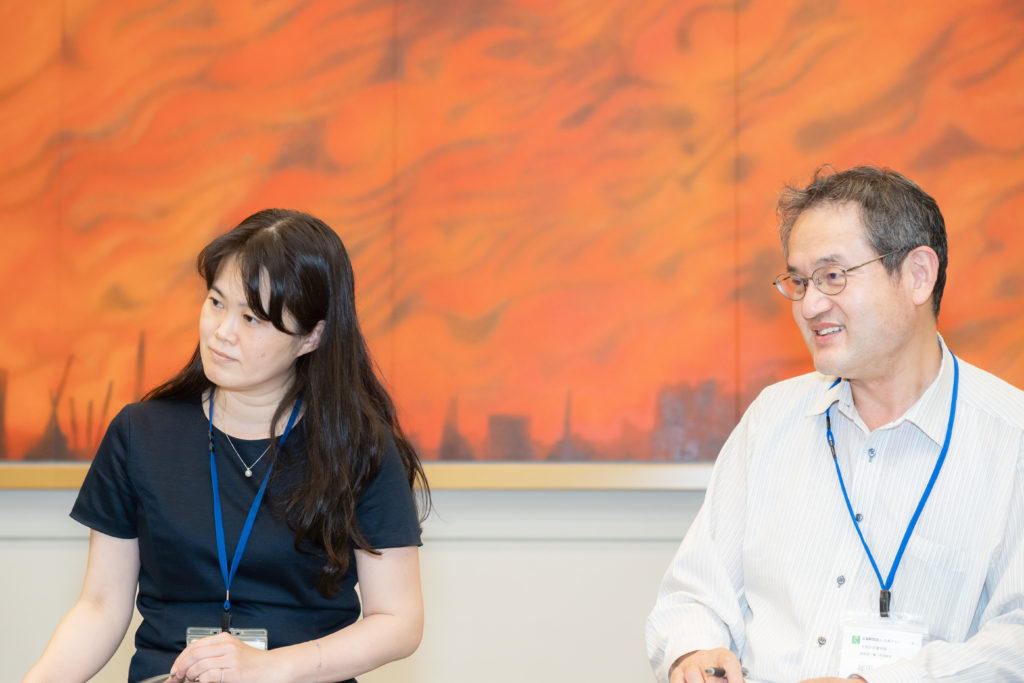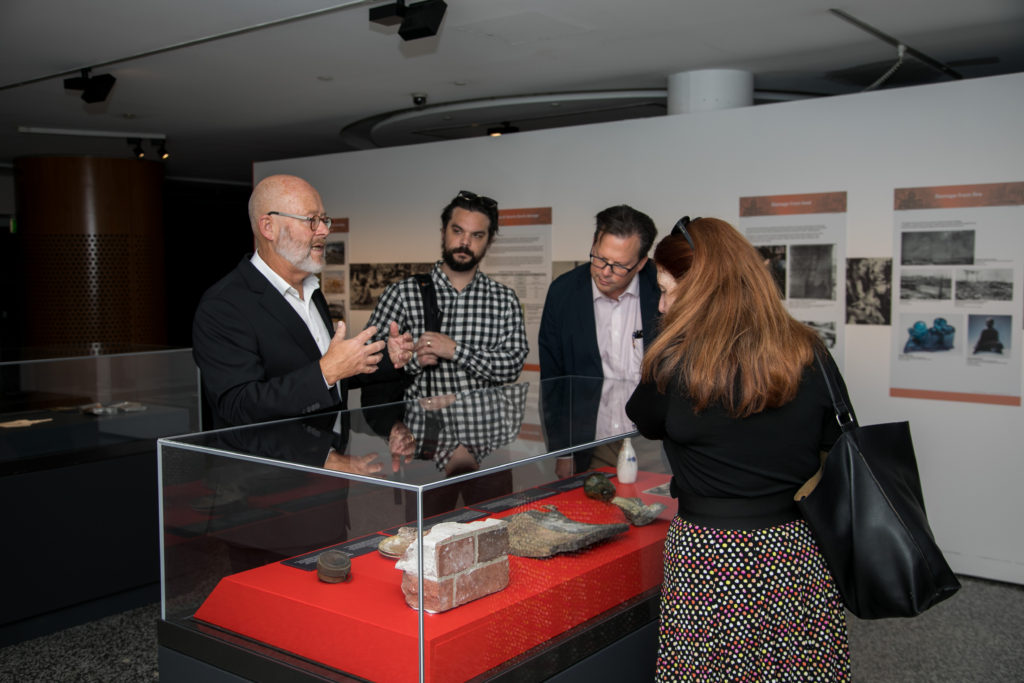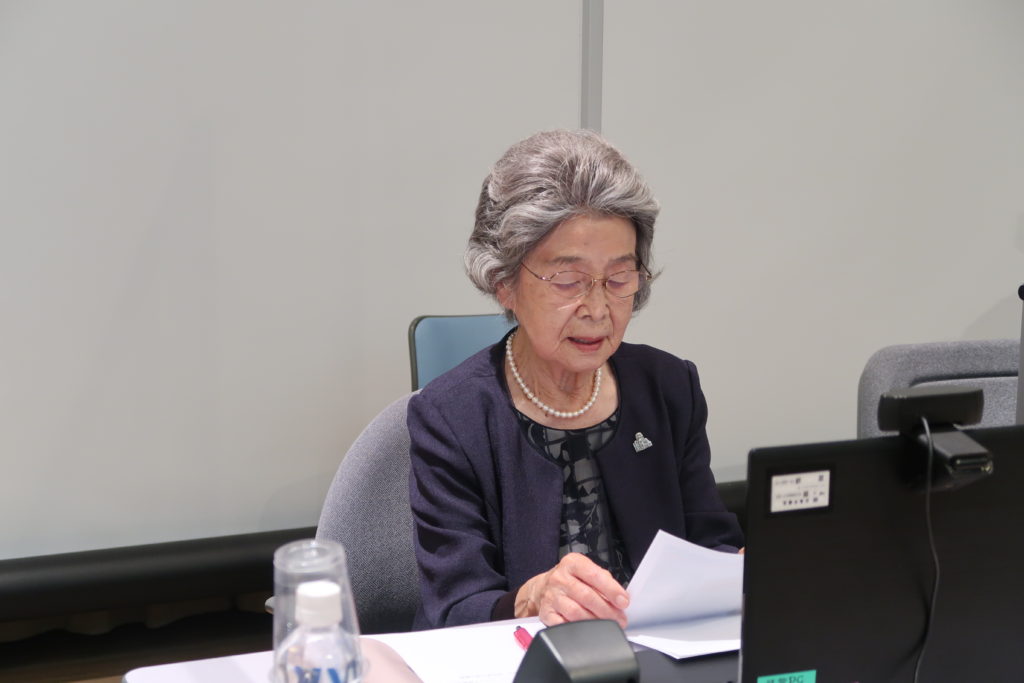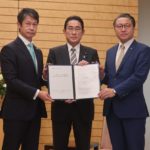Striving for the abolition of nuclear weapons and everlasting world peace

© The Australian National Maritime Museum
“War and Peace: The atomic bombing of Hiroshima and Nagasaki” is an exhibition that is jointly held by Hiroshima City and Nagasaki City. First launched in 1995 to raise awareness of the grim reality of atomic bombs and appeal for the abolition of nuclear weapons, this exhibition has now been held in 45 cities across 19 different countries, with its latest iteration held this summer in Sydney, Australia (Photos 1, 3). We spoke to Mr. Hosoda Masuhiro (Deputy Director of the Hiroshima Peace Memorial Museum) and Ms. Wada Kaori (Public Awareness Division of the Hiroshima Peace Memorial Museum) who oversee the organization of this exhibition.

“Only two cities have suffered an atomic bombing, namely Hiroshima and Nagasaki, so I think it is a lot more effective to have both cities convey the deadly power of these nuclear weapons and the devastating damage that can result. Hiroshima was the first ever city to be bombed, and we are doing everything we can to ensure that Nagasaki is the last city to suffer this fate.” (Mr. Hosoda, on the right)

© The Australian National Maritime Museum
The host cities of “War and Peace: The atomic bombing of Hiroshima and Nagasaki” are selected from cities that are members of Mayors for Peace that are dedicated to the abolition of nuclear weapons, as well as from cities that currently possess nuclear weapons. In 2020, the exhibition was held at the USS Battleship Missouri Memorial in Pearl Harbor, Hawaii, USA, which showcased items worn by those who had perished in the bombing, melted glass, a replica of a charred bento box rendered inedible by the bombing. In addition, A-bomb survivors visited the place and conveyed their voices to share their experiences. However, the COVID-19 pandemic has since made travel very difficult. In view of this, Ms. Kajimoto Yoshiko, a survivor who had borne witness to the atomic bombing, attended the opening event of the exhibition in Sydney this summer online to give a testimony on her first-hand experience (Photo 4). The testimonies of another eight A-bomb survivors were also screened in a video and their stories distributed in the form of documentary materials.
“Many people of all ages are here today. Although everyone knows the fact that the atomic bomb was dropped on Japan, the actual devastation that occurred under the mushroom cloud is rarely reported overseas. I often receive messages from people telling me that they had never known the truth behind the atomic bombing until they visited the exhibition, and from others who have become convinced that such a tragedy must never happen again. We have also received many kind words of appreciation for A-bomb survivors who have traveled overseas to share their first-hand experiences, such as ‘Thank you for coming all the way here’ and ‘I think it is very courageous of you to do this.’” (Ms. Wada, on the left of Photo 2)

© Hiroshima Peace Memorial Museum
Both Mr. Hosoda and Ms. Wada agree that the real voices of A-bomb survivors have the greatest impact on visitors. As these survivors continue to age, the museum is focused on training others to take on the mantle of passing on the survivors’ words and stories to future generations, an initiative that has gathered 148 registered participants.
“We will continue to hold this ‘War and Peace’ exhibition for many years to come, and we will continue to exhibit materials that highlight the inhumane nature of nuclear attacks overseas while sharing the voices of survivors. I hope that more people can regard the tragedy of the atomic bombing as something close to their hearts, and not just a historical event that happened a long time ago in a distant country. There are some people in the U.S. who are pro-nuclear weapons, but more and more people among the younger generation are starting to believe that these weapons are unnecessary. There is no doubt that this is in part due to the efforts of Hiroshima City and Nagasaki City over the years.” (Mr. Hosoda)
In conjunction with the upcoming Tokyo Olympics, this exhibition will be held in Bunkyo-ku, Tokyo; Chiyoda-ku, Tokyo; and Hanno-shi, Saitama, this summer. Since there have been fewer visitors to the Peace Memorial Park and the Peace Memorial Museum due to the COVID-19 pandemic, we hope that more people can take this opportunity to learn more by visiting the exhibition.
Hiroshima-Nagasaki Atomic Bomb Exhibition
TEL 082-242-7828 (Hiroshima Peace Memorial Museum)
HP http://hpmmuseum.jp/modules/info/index.php?action=PageView&page_id=179
Tags associated with this article







